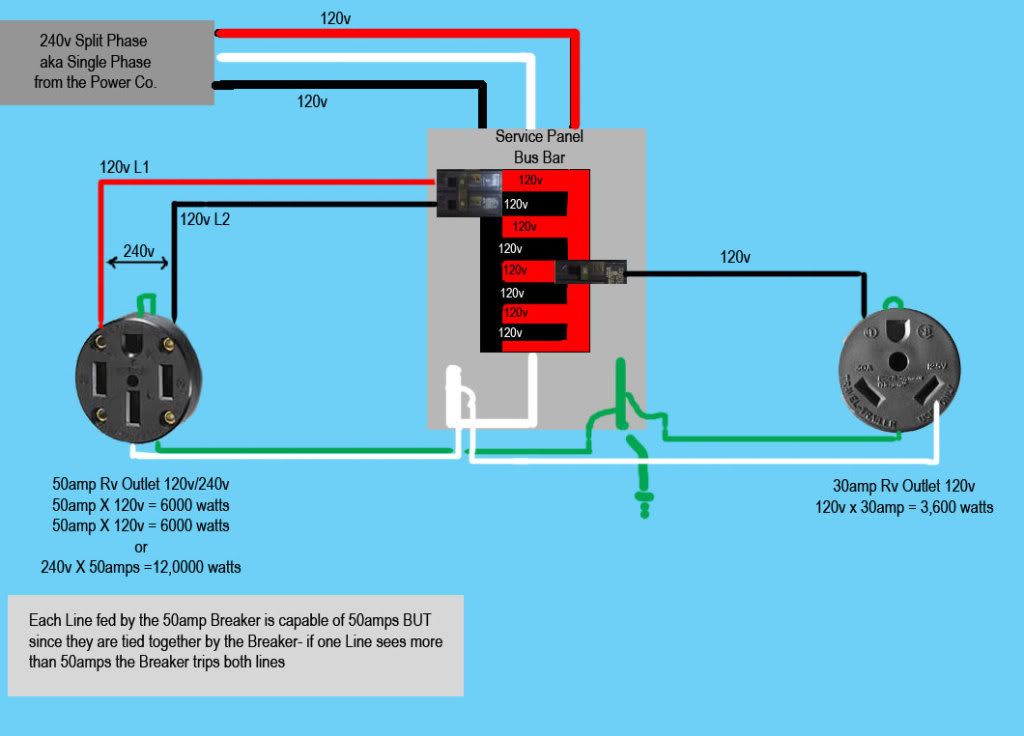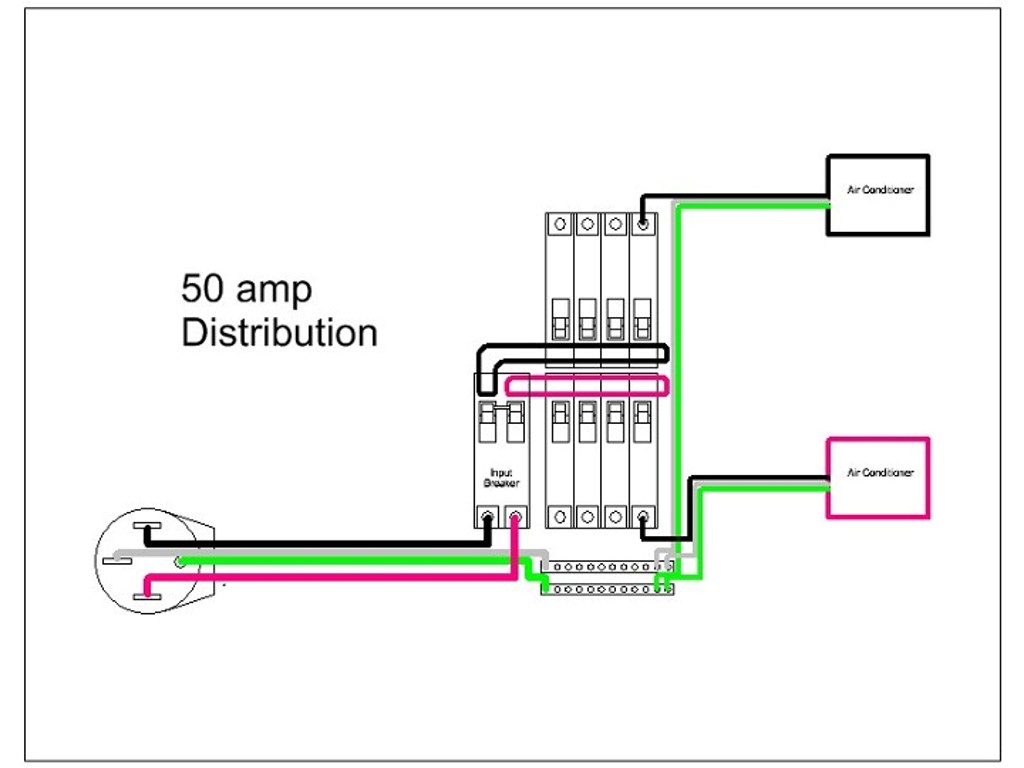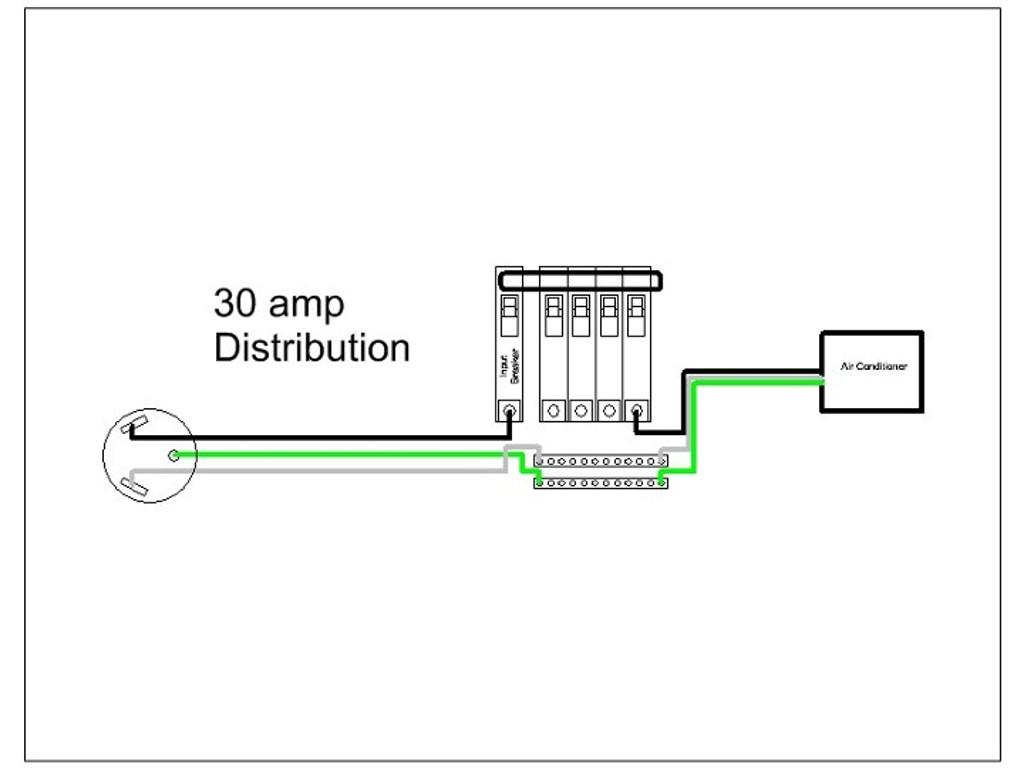This is a neat pictorial showing the typical camp ground pedestal and where the 50A and 30A/15A/20A sources come from.

These two pictorial show the proper way to test each of the three 120VAC sources...
50AMP Service (TWO HOT leads from each side of the 240V feed)

You can see 240VAC here if you measure from HOT1 to HOT2. Some upscale RV trailers indeed use 240VAC for some of the Dryer setup. In the regular wired RV 50A trailer two Power Panel ZONEs are used to tap off only 120VAC from each HOT1 and HOT2 legs of the 240VAC.

30A/15-20A service (ONE HOT lead from the same side of the 120V feed)

The highest AC voltage you will see here is 120VAC. The only difference between the 30A Connection and the 15/20A connection would be the rating of the circuit breaker (30A-20A-15A)

My attempt of showing how it works
Roy Ken




